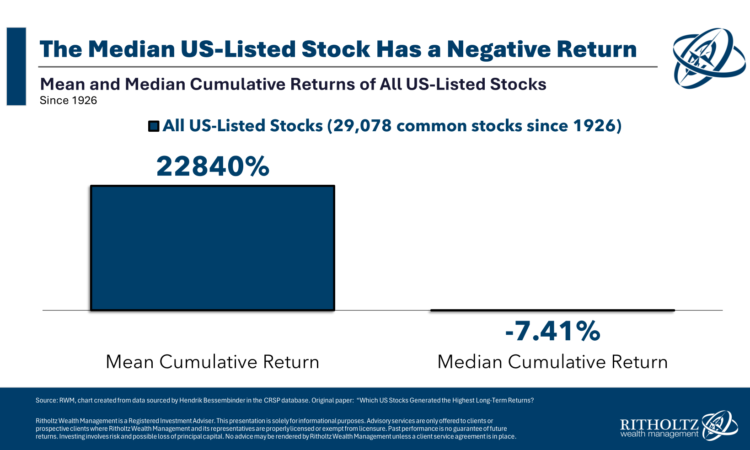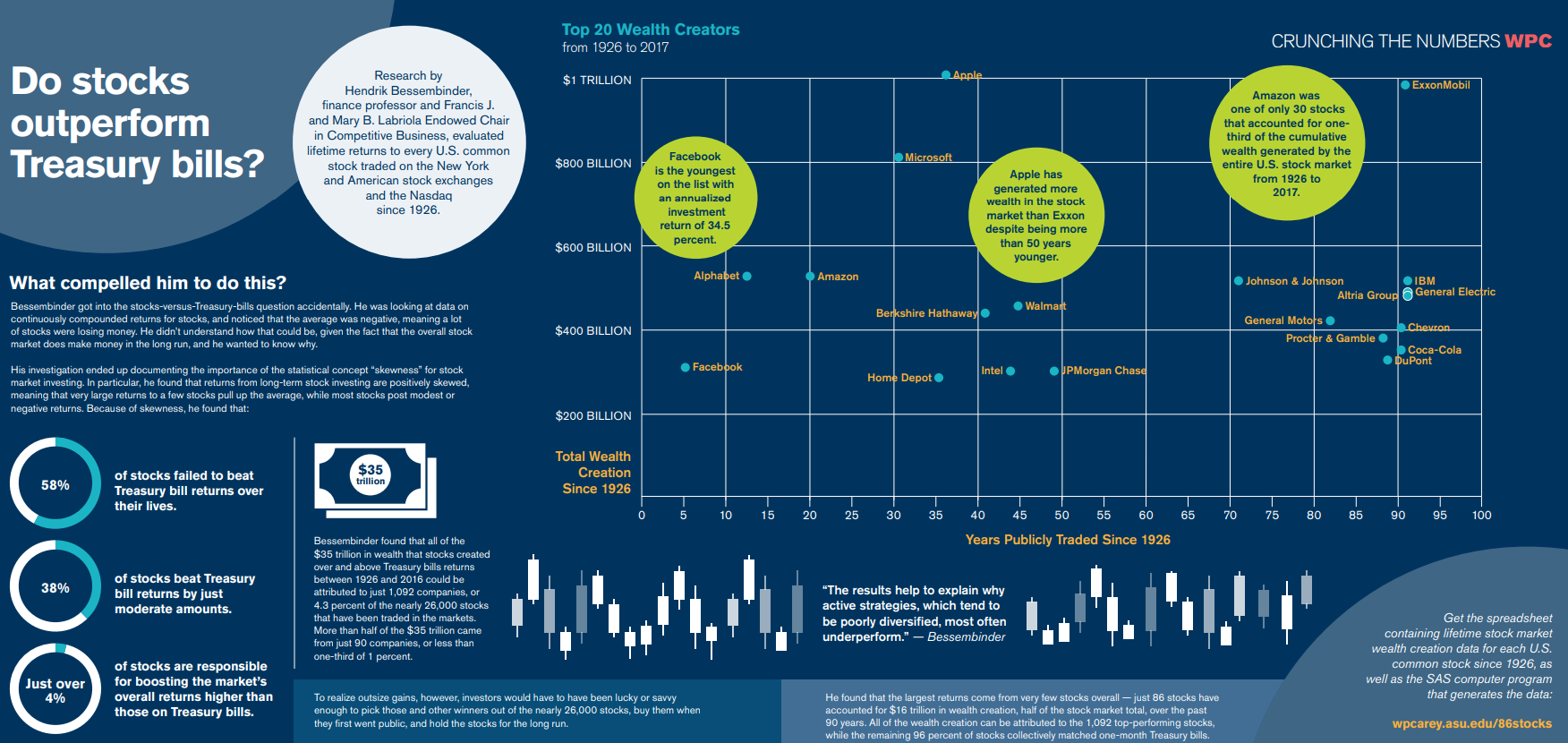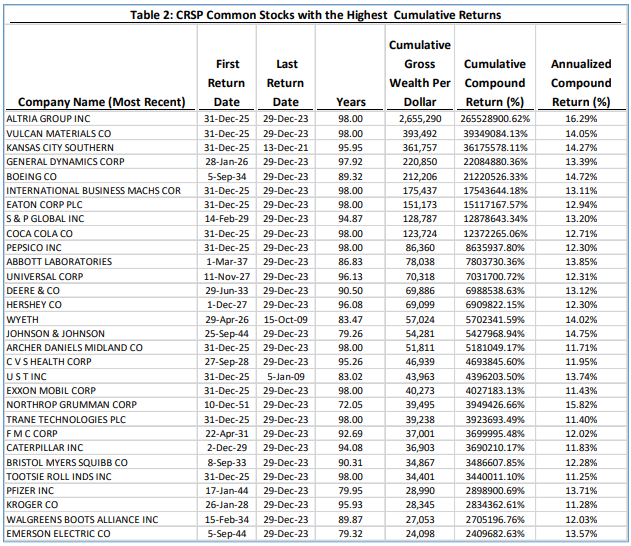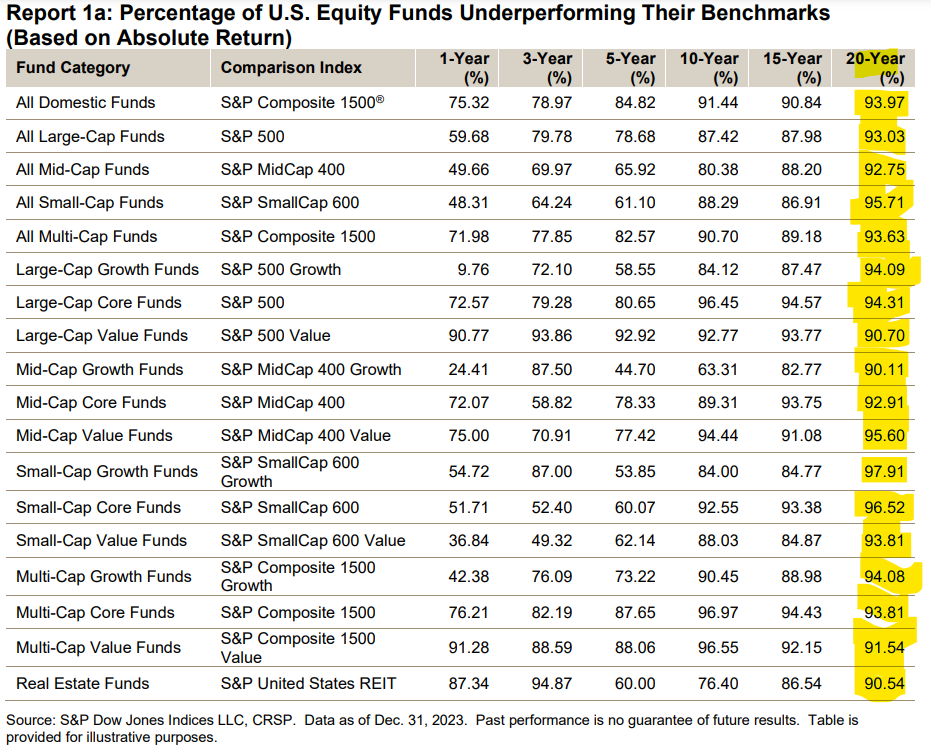
Hendrik Bessimbinder has produced some of my favorite stock market research.
Bessimbinder discovered that four out of every seven stocks in the U.S. have underperformed cash (one-month T-bills) since 1926. And just 4% of companies accounted for all the wealth gains for the entire stock market in that time.

The stock market runs on power laws over the long run.
Of course, there are stocks that do well over short time frames, but Bessimbinder’s research highlights the benefits of diversification to ensure you take part in those big winners over time.
In a newly released research paper, Bessimbinder goes deeper into the individual stocks that have experienced the biggest gains in market history.
This was the stat that stuck out to me the most from this research:

The average cumulative return going back to 1926 was nearly 23,000%, just a gargantuan number. But the median stock in that time experienced a cumulative return of -7.4%.
That’s a massive spread.
Remember, the median is simply the middle number of a group, which means more than half of all stocks have experienced negative returns.
The fact that the average return is so high reinforces Bessimbinder’s earlier work about the *jargon alert* positive skew in the stock market. This tells you the best-performing stocks have experienced outsized returns relative to the rest of the market.
Most stocks are crap over the very long-run but the biggest gainers more than make up for the losers.
Some more data that stood out:
- 17 stocks had cumulative returns of more than 5 million percent.
- The annual returns of these mega-winners were lower than you would expect, with an average of 13.5% annualized. Time in the market, etc, etc.
- Altria was the best-performing stock over the entire period, with annual returns of 16.3% from 1926 to 2023.
- Nvidia had the highest annualized return of any stock with at least 20 years of data at 33.4% per year.
- Just 38 stocks survived the entire 98 year period studied.
Here’s a look at the biggest winners over the long haul:

There are some surprises on the list, but mostly blue chip names, which I suppose is how they became blue chips in the first place.
Now for some takeaways:
Index funds are hard to beat for a reason. The SPIVA annual scorecard provides a nice proof of concept for Bessimbinder’s data:

The stock market is hard to beat because picking the winning stocks is hard. Index funds own them regardless.
Winners > losers. Index funds also own the losers, of which there are many.
But the winners more than make up for the losers.
That’s the beauty of the stock market.
Compounding over decade-long periods is like magic. There are no stocks for the long run with crazy 20% or 30% annual returns over 8-9 decades.
From 1926-2023 the S&P 500 was up 10.3% per year so it’s not like the best-performing survivors crushed the market by leaps and bounds.
But those above-average returns compounded over 98 years added up to incredible growth over that time.
That compounding has been magic for the stock market.
Further Reading:
Power Laws in the Stock Market
This content, which contains security-related opinions and/or information, is provided for informational purposes only and should not be relied upon in any manner as professional advice, or an endorsement of any practices, products or services. There can be no guarantees or assurances that the views expressed here will be applicable for any particular facts or circumstances, and should not be relied upon in any manner. You should consult your own advisers as to legal, business, tax, and other related matters concerning any investment.
The commentary in this “post” (including any related blog, podcasts, videos, and social media) reflects the personal opinions, viewpoints, and analyses of the Ritholtz Wealth Management employees providing such comments, and should not be regarded the views of Ritholtz Wealth Management LLC. or its respective affiliates or as a description of advisory services provided by Ritholtz Wealth Management or performance returns of any Ritholtz Wealth Management Investments client.
References to any securities or digital assets, or performance data, are for illustrative purposes only and do not constitute an investment recommendation or offer to provide investment advisory services. Charts and graphs provided within are for informational purposes solely and should not be relied upon when making any investment decision. Past performance is not indicative of future results. The content speaks only as of the date indicated. Any projections, estimates, forecasts, targets, prospects, and/or opinions expressed in these materials are subject to change without notice and may differ or be contrary to opinions expressed by others.
The Compound Media, Inc., an affiliate of Ritholtz Wealth Management, receives payment from various entities for advertisements in affiliated podcasts, blogs and emails. Inclusion of such advertisements does not constitute or imply endorsement, sponsorship or recommendation thereof, or any affiliation therewith, by the Content Creator or by Ritholtz Wealth Management or any of its employees. Investments in securities involve the risk of loss. For additional advertisement disclaimers see here: https://www.ritholtzwealth.com/advertising-disclaimers
Please see disclosures here.

